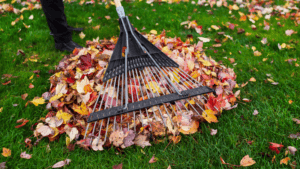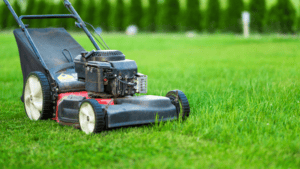
Here’s a quick refresher on pH levels in case you don’t remember: pH is measured on a scale of 0 to 14. For measurements that fall less than 7 will indicate an alkaline level; measurements greater than 7 will indicate an acidic level; while a measurement at 7 means the level is neutral.
When measuring your soil’s pH, the ideal measurement should range somewhere between 6 and 7. If your lawn’s soil level is not neutral, whether it’s too acidic or too alkaline, then it would indicate that your lawn may not be getting the nutrients it needs to healthy, lush and green.
To find out where your lawn’s pH level falls, you will need to either purchase a soil pH test kit or simply test yourself using baking soda and vinegar. No matter the type of test you complete, you will need to pull a soil sample that is 3 to 4 inches below the grass and is free from rocks, grass, thatch or any other debris.
If your testing using baking soda and vinegar, you will need about 2 cups worth of soil divided into 2 separate containers (1 cup in each container). In both containers, add enough to make the soil mud. Then in 1 container add a half-cup of vinegar, stirring slightly. If the soil begins to fizz or bubble then the soil is alkaline. If nothing happens, then stir in a half-cup of baking soda to the second container of mud. If the soil reacts by fizzing or bubbling then the soil is acidic. If you complete both tests and nothing happens, your soil is neutral.
After completing the tests, and your results indicate your soil is anything but neutral, then you will need to make an adjustment to your soil so that it becomes neutral. If your soil is at an acidic level then that means lime should be added to your lawn. Conversely, if your tests indicate your soil is alkaline, then sulfur should be added.
Correcting your lawn’s pH with either lime or sulfur will help to prevent thatch build up, fertilizer will work more effectively, and your grass will be able to absorb nutrients properly. So if your lawn isn’t looking it’s best, consider doing a pH test so you can be sure to give your lawn’s soil the treatment it needs to give you a beautiful lush, green lawn.


